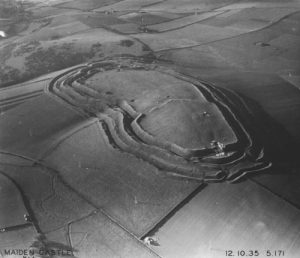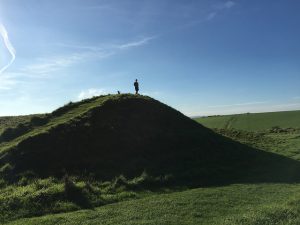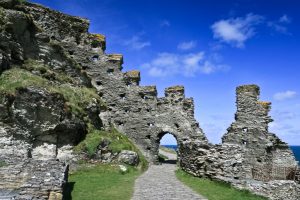
Aerial photograph by Major George Allen

A photograph by Andy Lamb showing the sheer scale of the mounds
There are well over a thousand known iron age hill forts in the UK, but Maiden Castle is the biggest. It may even be the biggest in Europe. If any of them deserve the title Castle, then it’s Maiden Castle in Dorset.
Hill forts consist of earthen embankments and ditches around a hill top. Maiden Castle has four sets of embankments around the highest hill in the area. When it was built, the ditches cut into the hill embankments would have revealed the chalk under the grass, making them bright white. I like to think they kept them clean to make the hill fort more impressive and obvious. People lived inside the forts and farmed the areas outside.
That’s pretty much everything we know for certain about hill forts.
The people who lived in them didn’t have a written language, and they were going into decline by the time to Romans arrived, so archaeologists have had to reconstruct things from evidence found on these sites, and the occasional written record from outsiders, plus generalising from other sites. You see these places are old!
The Unknown and the Ancient



![By Baynes, James, 1766-1837 Woolnoth, William, fl. 1785-1836 [CC0], via Wikimedia Commons](http://blog.artemisgames.co.uk/wp-content/uploads/2017/07/Harlech_Castle_Merionethshire_1130913-300x243.jpg)
